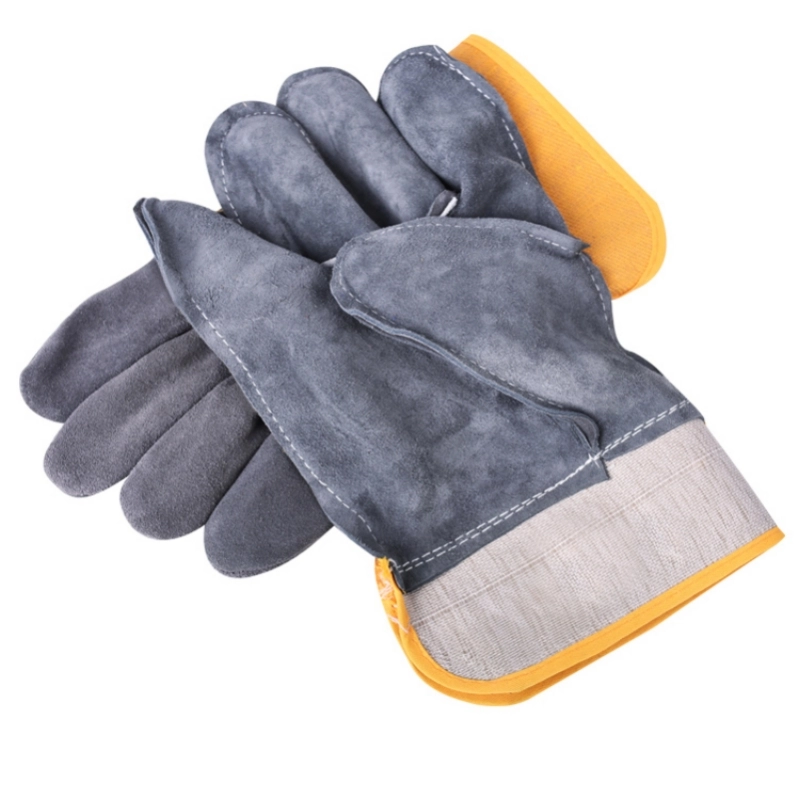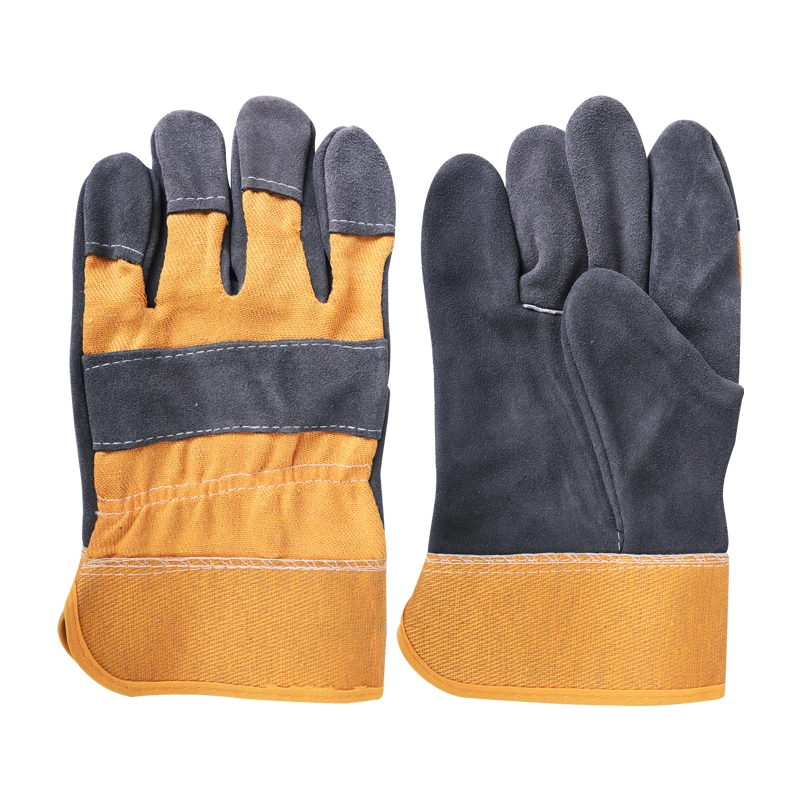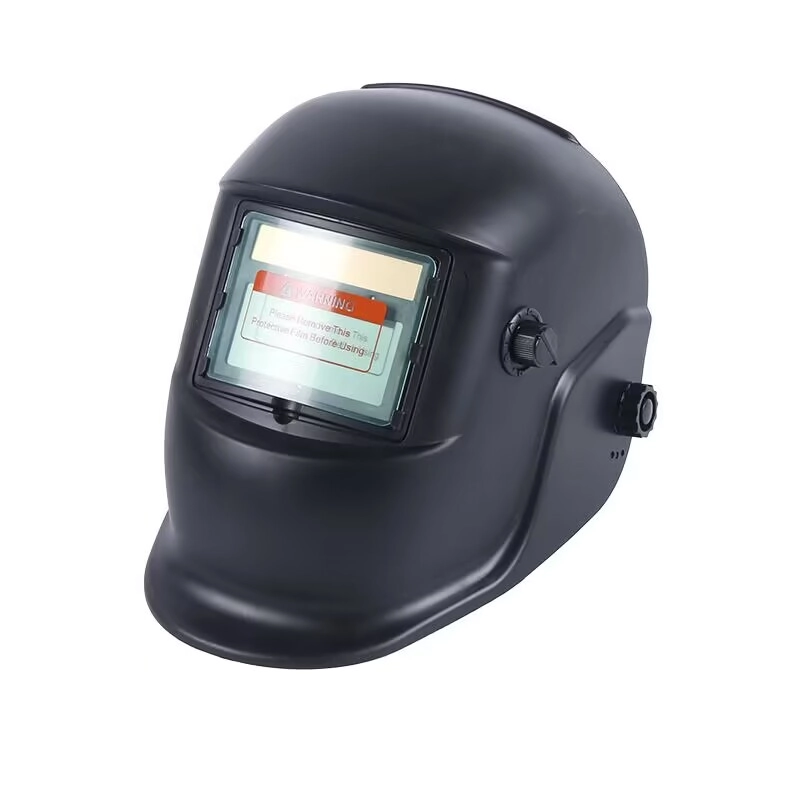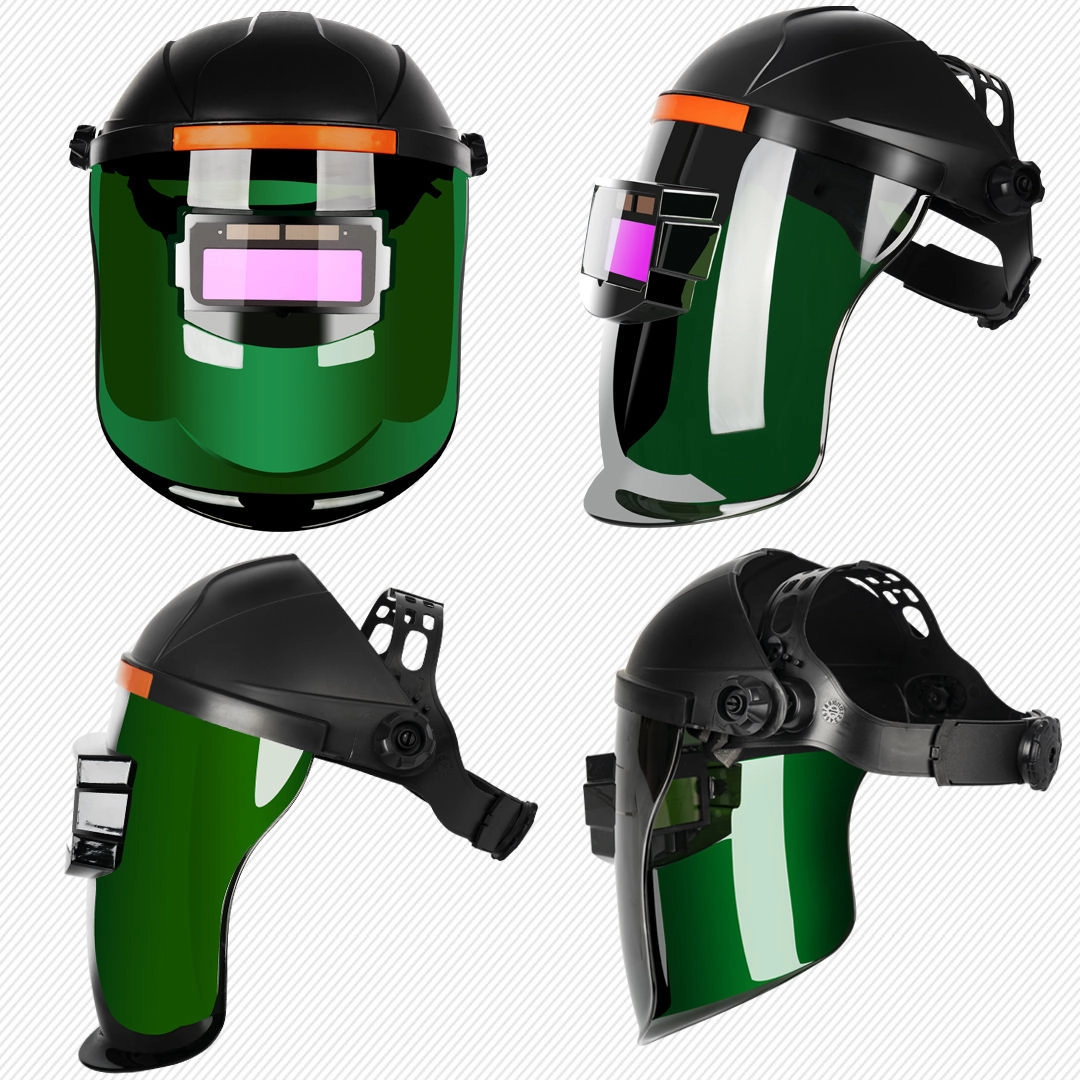The Illuminating Evolution of Welding Helmets and Welding Safety
The journey of the welding helmet is a fascinating tale of innovation, driven by the ever-present need for enhanced welding safety and efficiency. From rudimentary hand-held shields to sophisticated auto-darkening marvels with integrated respiratory systems, the evolution of welding helmets mirrors the advancements in welding technology itself. This article will delve into the history of the welding helmet, tracing its path from basic eye protection to the advanced safety equipment welders rely on today. Understanding this evolution of welding protection is crucial not just for welders, but for anyone involved in procuring or managing welding safety equipment, as it highlights the incredible progress made in safeguarding one of our most skilled trades. You'll discover why modern welding helmets are indispensable pieces of PPE (Personal Protective Equipment) and how they protect the welder from numerous hazards.
Before the Helmet: How Did Early Welders Shield Themselves?
Long before the invention of the dedicated welding helmet, the practice of joining metals, or weld-ing, existed. Welding existed in simpler forms even back in the Bronze and Iron Ages. However, with the advent of arc welding in the late 19th century, the hazards to welders increased dramatically. The intense light, UV and IR radiation, and flying sparks from the welding arc posed serious risks. In these early days of welding, protection was often rudimentary.
Welders might have used makeshift items like pieces of wood with a slot, simple goggles (often just tinted glass), or basic hand-held face shields. These offered minimal protection, especially against the harmful invisible radiation generated by the welding process. The primary goal was to simply reduce the glare enough to see the weld puddle. This often meant welders suffered from "arc eye" (photokeratitis), a painful condition akin to sunburn on the cornea, and faced risks of burns from hot metal and sparks. The concept of comprehensive eye and face protection as we know it was still a long way off.
The limitations of these early methods were stark. Hand-held shields occupied one hand, reducing efficiency and control over the welding process. Goggles, while freeing up hands, offered no facial protection from sparks or radiation burns. The need for a more integrated and effective solution was becoming increasingly apparent as the welding industry grew.

The Dawn of Dedicated Protection: When Was the First Welding Helmet Invented?
The creation of the first welding helmet is a bit murky in historical records, as early patents often focused on the lens or viewing port rather than the helmet shell itself. However, the need for better protection led to innovations. While some sources point to designs appearing around the early 1900s, a commonly cited milestone for a more recognizable first welding helmet or a patent that significantly contributed to its development is attributed to Willson Products around 1913, though specific widely accepted "first" is hard to pin down. These early helmets were often simple, vulcanized fiber shells designed to be worn over the head, freeing both hands for the welder.
These pioneering helmets typically featured a small, rectangular window fitted with a dark, fixed-shade lens. The lens shade was usually a piece of heavily tinted glass, often a dark green or blue, designed to filter the intense visible light of the welding arc. The primary aim was to prevent flash burn and allow the welder to see the weld pool. While a significant step up from hand shields, these early helmets were still quite basic.
The introduction of a head-mounted shield was a game-changer. It allowed the welder to nod the helmet down to lower the helmet into place before striking an arc and then flip it up to inspect the weld. This simple action, however, would eventually lead to neck strain for many welders, a problem later addressed by auto-darkening technology. But at the time, it represented a major leap in welding safety equipment.
What Materials Forged the First Welding Helmets?
The materials used for early welding helmets needed to be lightweight enough for comfort, durable enough to withstand workshop conditions, and, crucially, non-conductive and heat-resistant. One of the most common materials for the first welding helmet designs was vulcanized fiber. This material, made by treating paper or cellulose with zinc chloride, created a dense, strong, and relatively lightweight product.
Vulcanized fiber offered good electrical insulation and could resist the heat and sparks produced during arc welding processes. It was also relatively inexpensive and could be molded into the necessary curved shapes to protect the welder's face and neck. The helmets were typically a one-piece helmet design, or assembled from a few key pieces.
However, vulcanized fiber wasn't without its drawbacks. It could absorb moisture, potentially warping or becoming less rigid over time, especially in humid environments. It could also become brittle with age or prolonged exposure to heat. Despite these limitations, it remained a popular choice for many years before more advanced plastics and composite materials became available for welding helmet construction. The focus was primarily on deflecting sparks and blocking light; sophisticated considerations like welding fume protection were not yet part of the helmet design.
A Pivotal Year: How Did 1937 Revolutionize Welding Helmet Design?
The year 1937 is often highlighted in the history of welding helmets due to significant patent activity and advancements in welding safety. While not a single invention, innovations around this period contributed to more standardized and effective designs. One key development was improvements in lens technology and the way lenses were incorporated into the helmet.
It's important to understand that the evolution of welding protection was gradual. Patents filed around 1937 and the years immediately surrounding it built upon earlier concepts. For example, U.S. Patent 2,067,879, filed in 1935 and granted in 1937 to George E. Leighton for a "Welder's Hood," showcased a design aiming for better fit and adjustability. Such developments focused on making the welding helmet more practical and comfortable for the welder.
These refinements included better headgear for a more secure and comfortable fit, improved mechanisms for flipping the lens holder up and down, and more consistent quality in the protective lenses themselves. While still primarily passive (fixed shade) lenses, the industry was moving towards creating a more complete and reliable piece of personal protective equipment used for welding and cutting operations. The focus was on providing a more robust shield against the immediate hazards of the welding arc.
The Era of Passive Lenses: How Did They Guard Against the Welding Arc?
For many decades, the standard for eye protection in welding helmets was the passive, or fixed-shade, lens. These lenses are made of a special type of glass or polycarbonate that is permanently darkened to a specific shade number (e.g., shade 10, 11, or 12). The shade number indicates the lens's ability to filter the intense light generated by the welding process, including harmful UV and IR radiation.
Here’s how they worked:
- Before Welding: The welder would position their workpiece and electrode. Because the lens was constantly dark, they would often need to flip the welding helmet up to see clearly for setup, or use a "cheater lens" (magnifier) in conjunction with the dark lens.
- Striking the Arc: Just before striking the welding arc, the welder would nod their head to lower the helmet into place.
- During Welding: The dark lens would filter the arc’s brightness, allowing the welder to see the molten weld pool and control the welding process. It also provided crucial protection against UV radiation and IR (infrared) radiation, which can cause serious eye damage.
- After Welding: The welder would flip the helmet up again to inspect the weld and prepare for the next one.
While effective at protecting the eyes once in place, passive lenses had significant drawbacks:
- Constant Flipping: The repetitive "nodding down" and flipping up of the helmet could lead to neck strain and fatigue over time.
- Visibility Issues: It was difficult to see the work area clearly before the arc was struck, sometimes leading to inaccurate arc starts.
- Reduced Productivity: The time spent adjusting the helmet could reduce overall productivity, especially in jobs requiring frequent tack welds or short welding runs.
Despite these issues, passive lens welding helmets were the backbone of welding safety for a long time and are still used in some applications today, valued for their simplicity and lower cost. They certainly did protect the welder from the most immediate dangers of the welding arc. For comprehensive protection, welders often paired these helmets with other gear like durable 14'' Red Color Cowhide Welding Gloves to shield their hands.

Flipping Lids and Strained Necks: What Drove the Need for Auto-Darkening Technology?
The repetitive motion of flipping a passive welding helmet up and down wasn't just an inconvenience; it was a genuine occupational hazard for many welders. This constant nodding contributed to chronic neck pain and musculoskeletal issues for some. Furthermore, the inability to clearly see the starting point of a weld with the dark lens in place could lead to misfires, porosity, or other defects, requiring rework and reducing overall efficiency. The welding industry was ripe for a solution that could enhance both safety and comfort, as well as productivity.
Imagine a welder working in a tight, confined space. Flipping the helmet might be difficult or impossible. Or picture a scenario requiring numerous quick tack welds. The time and effort spent manipulating the helmet could easily outweigh the actual welding time. These practical challenges, coupled with the desire for better weld quality and welder well-being, were strong drivers for innovation.
The dream was a welding helmet that could "see" when the welding arc started and darken automatically, then return to a clear state when the arc stopped. This would eliminate the need to nod, allow continuous visibility of the workpiece, and significantly improve the ergonomics of the welding process. This was the seed from which auto-darkening technology would grow.
The Game Changer: How Do Auto-Darkening Filters (ADF) Actually Work?
The breakthrough came with the development of the auto-darkening filter (ADF). The first auto-darkening welding helmet was introduced by a Swedish company, Hornell International, in 1981, marketed under the brand name Speedglas. This was a revolutionary step in the evolution of welding helmets. 3M later acquired Hornell and continued to develop Speedglas technology.
So, how do these marvels of welding helmet technology work? Here's a simplified explanation:
- Light State: In its normal state (when no weld is being performed), the ADF lens is relatively clear (typically a shade 3 or 4), allowing the welder to see their work area without needing to lift the helmet.
- Sensors: The ADF is equipped with light sensors (usually two to four) on the front of the filter cartridge. These sensors are designed to detect the bright flash of a welding arc.
- Liquid Crystal Display (LCD): The core of the ADF is a liquid crystal display, similar to those used in digital watches or calculators, but specialized for light filtration.
- Instant Darkening: When the sensors detect the arc, they instantly send a signal to the LCD. The liquid crystals within the display reorient themselves in a fraction of a second (often as fast as 1/25,000th of a second or even faster in high-end models) to darken the lens to a pre-selected welding shade (e.g., shade 9 to 13). This protects the welder's eyes from the intense light and UV/IR radiation.
- UV and IR Protection: Importantly, even in its light state, the ADF lens provides continuous protection against harmful UV and IR radiation. This is a critical safety feature.
- Return to Light State: Once the welding arc stops, the sensors detect the absence of the intense light, and the ADF automatically returns to its clear (light) state, usually after a short, adjustable delay.
Auto-darkening welding helmets transformed the welding experience. They offered:
- Increased Productivity: No more flipping the helmet up and down.
- Improved Weld Quality: Better visibility for precise arc starts.
- Enhanced Safety: Reduced risk of "flashing" from an ill-timed nod.
- Greater Comfort: Minimized neck strain.
This auto-darkening technology quickly became the new standard for professional welders, and today’s welding helmets predominantly feature ADFs with various levels of sophistication.

Beyond Vision: What Other Advancements Define Modern Welding Helmets?
The evolution of welding helmets didn't stop with auto-darkening filters. Modern welding helmets have come a long way, incorporating a host of features designed to enhance safety, comfort, and functionality for the welder. These advancements address a broader range of hazards and user needs.
Some key features found in modern helmets include:
- Lighter, More Ergonomic Shells: Welding helmets are made from advanced, lightweight, and durable materials like heat-resistant nylon or other thermoplastics. Helmet design focuses on better balance, reducing strain on the neck. The helmet cut to protect not just the face but also the neck and ears more effectively.
- Improved Headgear: Modern headgear is highly adjustable, with multiple points of articulation for a customized, comfortable, and secure fit. Cushioned sweatbands and ratcheting mechanisms are common.
- Variable Shade Control: Many ADF welding helmet models allow welders to adjust the dark shade (e.g., from shade 5 to 13) to suit different variety of welding processes (like gas tungsten arc welding or high-amperage stick welding) and amperages.
- Sensitivity and Delay Controls: Welders can adjust the sensitivity of the arc sensors (useful in environments with other nearby welders) and the delay time for the lens to return to its light state after welding.
- Grind Mode: A very useful feature that allows the welder to temporarily disable the auto-darkening function, keeping the lens in its light state (e.g., shade 3 or 4) for grinding operations, without needing to switch to separate face shields or goggles.
- Larger Viewing Areas: Many modern welding helmets offer larger viewing windows, providing better peripheral vision and a more open feel.
- True Color Technology: Advanced lenses now provide a more natural color perception, reducing the traditional green tint, which can improve visibility of the weld puddle and surroundings.
- Powered Air Purifying Respirators (PAPR): This is a major advancement for occupational safety and health. PAPR systems integrate a blower unit (often belt-mounted) that pulls air through a filter and delivers clean, breathable air into a sealed welding helmet. This protects the welder from harmful welding fume, dust, and particulates. A powered air purifying respirator is crucial for welders working with materials like stainless steel or in confined spaces.
These features collectively make welding safer, more comfortable, and more efficient. The emphasis is on total eye and face protection combined with respiratory safety and ergonomic design. When discussing full protection, it's also important to consider apparel such as a Heat and Flame Resistant Cowhide Welding Work Apron for added body safety.
Ensuring Reliability: What Key Safety Standards Do Today’s Welding Helmets Adhere To?
To ensure that welding helmets provide adequate protection, they must meet stringent safety standards. These standards are developed by organizations that specify performance requirements for welding safety equipment. For procurement officers like Mark Thompson, understanding these certifications is vital for ensuring the safety equipment they source is reliable and compliant.
Key standards include:
- ANSI Z87.1 (USA): This American National Standards Institute standard covers practice for Occupational Safety and Health for eye and face protection. Welding helmets sold in the US must meet ANSI Z87.1 requirements, which include tests for impact resistance, optical clarity, and radiation protection (UV/IR). The standard also specifies requirements for auto-darkening filters, including switching speed and shade consistency.
- CE Marking (Europe): In Europe, welding helmets must carry the CE mark, indicating conformity with health, safety, and environmental protection standards for products sold within the European Economic Area (EEA). Relevant EN standards include EN 175 (Personal protection - Equipment for eye and face protection during welding and allied processes), EN 379 (Personal eye-protection - Automatic welding filters), and EN 166 (Personal eye-protection - Specifications).
- CSA Z94.3 (Canada): This Canadian Standards Association standard covers industrial eye and face protection, including welding helmets.
- AS/NZS (Australia/New Zealand): Australian and New Zealand standards also regulate welding helmets and protective equipment.
These standards typically mandate testing for:
- Impact Resistance: The helmet shell and lens must withstand impacts from flying particles.
- Radiation Protection: Lenses must filter out 99.9% or more of harmful UV and IR radiation, regardless of the shade setting or whether the ADF is activated.
- Optical Quality: Lenses are tested for clarity, distortion, and prismatic power.
- Switching Speed (for ADFs): The time it takes for an auto-darkening lens to switch from its light to dark state.
- Shade Consistency: Ensuring the selected lens shade is accurate and uniform across the viewing area.
- Durability and Flammability: The helmet materials must be durable and resistant to ignition.
Compliance with these standards gives welders and employers confidence that the welding helmet will perform as expected, providing reliable protection. It's essential to look for these markings when purchasing any welding safety gear, from helmets to Dongtie Flame Retardant Cotton Welding Caps, which offer additional head protection under the helmet.

Gazing into the Future: What’s Next for Welding Helmet Technology?
The evolution of welding helmets is far from over. As welding technology itself advances, so too will the protective equipment designed for welders. The future likely holds even "smarter" and more integrated welding helmets.
Potential future innovations could include:
- Integrated Augmented Reality (AR): Imagine a welding helmet that overlays critical information directly onto the welder's field of view – things like welding parameters, schematics, temperature readings, or even instructional guides. This could enhance precision and efficiency, especially for complex weld jobs or for training new welders.
- Advanced Data Logging and Connectivity: Helmets could potentially track arc-on time, exposure to fumes, or other relevant data, helping companies monitor safety compliance and productivity. Connectivity could allow for remote diagnostics or even real-time assistance.
- Even Lighter and Stronger Materials: Ongoing research into materials science will likely lead to helmets that are even more lightweight, comfortable, and impact-resistant.
- Smarter PAPR Systems: PAPR technology could become more adaptive, automatically adjusting airflow based on exertion levels or ambient fume concentrations. Filter life indicators could become more precise.
- Biometric Monitoring: Future welding helmets include sensors that could monitor a welder's vital signs, such as heart rate or body temperature, providing early warnings of heat stress or fatigue, especially important during advanced welding in challenging environments.
- Enhanced Communication Systems: Built-in communication systems could become more common, allowing welders to communicate clearly with colleagues in noisy environments without removing their helmets.
The drive for better welding safety, increased productivity, and enhanced welder comfort will continue to fuel innovation. As a factory specializing in protective gear, we at DTlabor are always watching these trends, committed to providing the welding industry with high-quality, reliable protection that meets and anticipates the needs of the modern welder. Just as important as head and eye protection is hand safety, which is why we offer a wide range of welding gloves and labour protection products.
The history of the welding helmet shows a remarkable progression. What started as a simple shield has transformed into a highly sophisticated piece of PPE, crucial for protecting welders from the multiple hazards of their trade. As we look to the future, it's clear that the welding helmet will continue to evolve, playing an ever more critical role in the safety and success of the welding and allied processes.
Key Takeaways: The Evolution of Welding Helmets
Here’s a quick recap of the most important things to remember about the journey of the welding helmet:
- Early Days: Protection was minimal, often just hand-held shields or basic goggles, offering little defense against UV/IR rays or sparks from the first welding techniques.
- Invention of the Helmet: The early 20th century saw the development of head-mounted vulcanized fiber helmets with fixed, dark glass lenses, a significant step for welding safety equipment.
- Passive Lenses: For decades, fixed-shade passive lenses were the standard, requiring welders to "nod" the helmet down, which could cause neck strain but did protect the welder.
- The Auto-Darkening Revolution (1980s): The first auto-darkening welding helmet (like Speedglas by Hornell, later 3M) transformed the industry, using LCD technology and sensors to automatically darken the lens upon arc ignition.
- Modern Advancements: Today’s welding helmets feature lightweight ergonomic designs, larger viewing areas, true color technology, grind modes, and crucially, integrated Powered Air Purifying Respirator (PAPR) systems for welding fume protection.
- Safety Standards are Key: Compliance with standards like ANSI Z87.1 (USA) and EN standards (Europe) ensures helmets meet rigorous testing for impact, radiation protection, and optical clarity.
- Continuous Innovation: The evolution of welding helmets continues, with potential future features including augmented reality, advanced data logging, and even smarter protective systems.
- Holistic Protection: A welding helmet is a critical piece of PPE, but it's part of a larger system of safety equipment that includes gloves, aprons, sleeves, and respiratory protection, all designed to ensure the welder's well-being.






